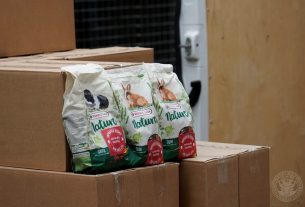The museum recently opened its main attraction, the Royal Treasury, which displays a replica of the Bocskai crown, in the shopping center, and now it is bringing its most popular exhibition, RETRO, to Debrecen. Trapper jeans, winky wallets, donuts – just a few of the hundreds of iconic items that will be on display at the Forum in the second half of March.
The exhibition of the museum in Hajdúszoboszló is based on the nationally renowned retro collection of Ferenc Dalnoky and his wife, which has been on display in a permanent museum exhibition for 15 years. Its popularity has remained unbroken ever since. His special pieces perfectly illustrate the lifestyle of the 1970s and 80s. The thematic exhibition presents the material culture of the living space, the kitchen, childhood, entertainment and consumption in a light and interactive way. Visitors can not only see but also try on the home jacket or trapeze pants.
In addition, in addition to nationally known brands such as Trapper, Tisza, Traubi, or Márka (nomen est omen), pieces and products from Debrecen that are considered special will also appear in the exhibition. An example of this is the toy model of the Csepel Bulldog type truck produced by the Debrecen Műanyagipari és Gombgyártó Vállalat, suitable for a kindergarten sandbox. A small number of these items are now available at most at the legendary Zsibogo in Debrecen (the local Polish, or KGST, more recently second-hand market), but most of them have become a real rarity in recent decades. Yet they once had astonishing success.
The winking wallet, for example, was taken to Czechoslovakia by truck, according to urban legend. For this purpose, the multi-dimensional postcards, originally produced in Japan, were purchased in Vienna, and then applied to boxes by Hungarian traffickers at home. This is an even greater weapon, since it was not yet possible to travel abroad at any time, especially not to the West. Today this is unimaginable. Like measuring the premium food from the counter, or waiting several years for the family car (Trabant, Wartburg). Despite the shortages, the range of consumer goods has been expanding since the 1970s. In fact, this is when the first American products appeared.
Coca-Cola, which was previously derided as the “opium of the West”, was also produced in the Hungarian Liquor Company’s quarry plant from 1968, so it could easily become the prestige drink of the 1970s. At that time, the Hungarian Sztár and Oázis soft drinks were also marketed, which were nicknamed “blonde cola” by young people because of their yellow color. The previously uniform dress code was first relaxed by youth subcultures (beat, rock). The two cult garments of the era, the miniskirt and jeans, were relatively quickly accepted by society. For the former, a tufted hairstyle, for the latter, long hair. At that time, for example, the training pants referred to as “teddy bears”, the sleeveless home jacket, the synthetic fiber shirt sweater, the long-necked turtleneck, and the faux leather jacket became typical home wear. The store network expanded, and the first department stores appeared (Centrum, Skála). The demand became more and more demanding, which was greatly influenced by Western consumer culture. In the 1980s, being well-dressed and following international fashion trends became a kind of social expectation. The domestic industry tried to replace some of the coveted Western goods, but the hard-to-obtain products continued to enter the country through smuggling.
Compared to the world of the past, everything is available (!) in today’s “cathedrals” of desires and needs, in modern shopping centers. This is exactly what makes the exhibition opening in the Forum really interesting because here it is also possible to authentically compare the consumer culture of today and 30-50 years ago.
Continuously guided tours and playful museum education sessions make the museum experience memorable. School classes can apply for the latter. Both the sessions and the exhibition are free-to-program opportunities that would be a shame to miss!
The exhibitions Facebook event.
It is also worth visiting the museum after the Forum!
In the “museum district” of Hajdúszoboszló, 7 exhibitions await those interested in 3 buildings. In the Bocska Museum, in addition to the retro exhibition, you can also see the Royal Treasury, interactive local history and ethnographic exhibitions. In the International Modern Gallery, original works by Picasso and Chagall await visitors.
debreceninap.hu


















